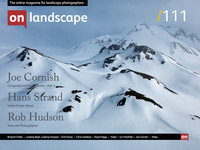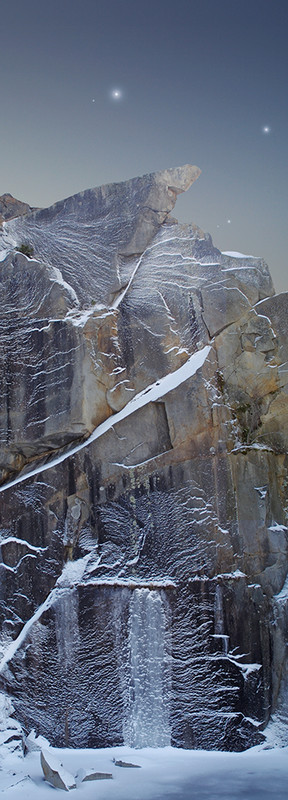Chris Goddard talks about one of his favourite images

Chris Goddard
Chris Goddard is a keen amateur landscape photographer from south Wales. Between raising a family and a full time job he enjoys making images of Britain’s beautiful landscape. His website can be found at
How do you go about choosing an image for discussion in a world full of images? Like others who have contributed to End Frame I was torn between a number of photographers and any number of their images. To help narrow it down I decided to focus my efforts on the photography I had collected, which is mostly in book form. To narrow it further, the books nearest my desk are my most cherished. This section I like to keep close for those times when I need to locate something that will elevate my mood and help me to think. Of this section one book has particular appeal - John Paul Caponigro’s – Landscapes Within.
Browsing through the book you cannot help but be inspired by the plates, John Paul is an outstanding photographer who is highly skilled with Photoshop and I do not know of anyone else quite like him, a true pioneer in this respect. . When I come across this page I find myself having a ‘wow’ moment, mostly internal, but on occasion I am sure I have caught myself saying it out loud. This reaction helped form the basis for my decision.
I love the tall frame, it gives the cliff a more imposing feel and emphasises its height, making the viewer look in an upward direction toward the sky. The stars (or planets?) add to the feeling of isolation and insignificance, a reminder we are just a small part in the vastness of the cosmos. It also helps provide suggested depth in an image which is not using perspective to accentuate visual depth having been made with a medium or long lens. Images with a compressed perspective like this largely depend on shapes, patterns, textures and detail, which rocky cliff faces like this with angled, icy ledges certainly have plenty of.
The unsympathetic conditions and obvious lack of life imply a sense of menace beneath the veneer of its beauty. The sheerness of the cliff and the pointed rock at the top all add to the ‘edginess’. There is no evidence of prior human activity, although I cannot help but notice that the thick layer of ice at the bottom of the cliff – which has a tall, thin rectangular shape to it - gives the appearance of a door, it’s like an invitation into the scene, tempting... maybe?
There are some quite rational reasons why we might have an innate fear of environments like this, human life is extremely fragile in such places and death is never far away if you are alone and ill-equipped. Perhaps the idea of the word ‘sublime’ might be appropriate, by that I mean - being right on the threshold between astounding beauty and the harsh cruelty of nature. It is apparent in John Paul’s imagery and writing that he cares deeply for such places, recognising the impacts we are having on the environment. This image and the others in the book serve as a reminder as to how beautiful ‘desolate’ places can be and, in what has recently been coined the ‘Anthropocene’, how delicate they are too.
Obviously, like any viewer of a piece of art, interpretation is subjective, completely coloured by one’s own sensibilities, emotions and past experiences, leading us all to have our own unique response to any number of visual cues. I can attribute the generalised characteristics in this image – night sky, stars, ice, rock, cliff - with memories from actual events in my life and, in some tainted way I am able to recollect some of the emotions I associated with those past moments. Those emotions are probably something like a mix of broad interest, wonder, awe and excitement but also contrasted with some apprehension and even fear. All this just through viewing one of John Paul’s images! That gives huge power to photography. I think this goes some way towards helping explain my lasting enjoyment of this picture, after all those experiences were profoundly positive to me.
The title of the book ‘Landscapes Within’ could be considered an open invitation in this sense. It is up to you to find out how you feel about the imagery, why do you feel that way? Explore that, see where it goes. Indeed, some of the images in the same book are inspired by Rorschach patterns and John Paul has explicitly welcomed interpretation in his writing - calling on viewers to ‘’strike up an active, ongoing and respectful dialog with the work and each other, keeping in mind that each separate interpretation has unique value’’. I have enjoyed exploring why I feel the way I do about one of John’s images and hopefully I have managed to make a positive contribution to that ongoing ‘dialog’.


